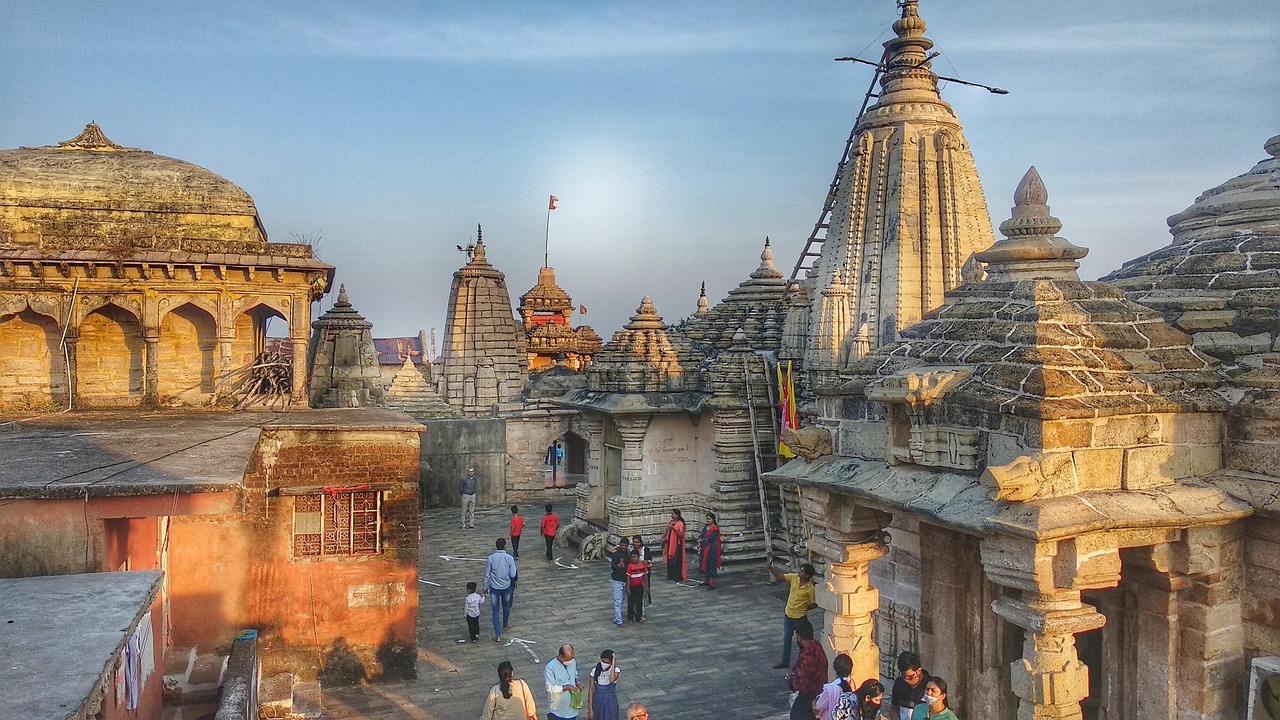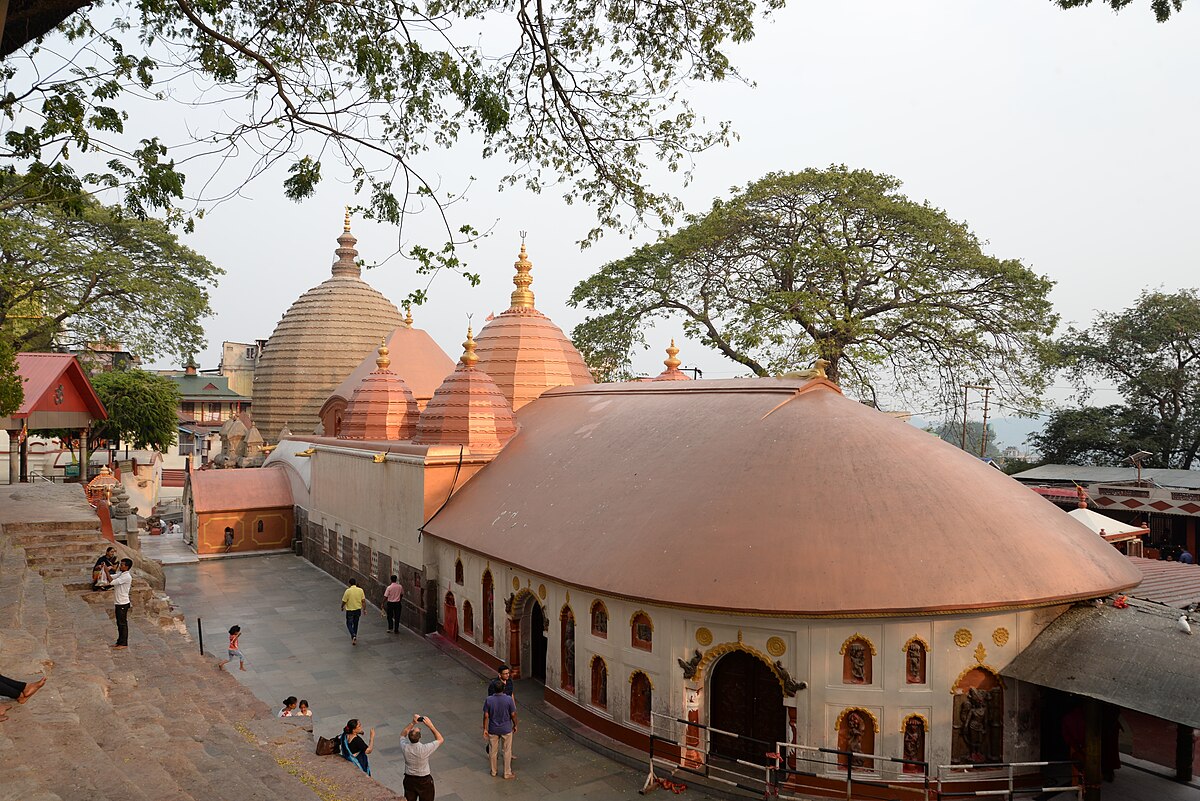
October 12, 2025
Temple Mandir
3 min read
Mandir: The Sacred Abode of the Divine
A temple is not just a structure of stone — it is a living heart of Sanatan Dharma. Every bell that rings, every lamp that flickers, and every mantra that echoes connects the human soul to the cosmic rhythm of the universe. In Sanatan Dharma, the temple is not merely a place to worship God, but a sacred science — where architecture, energy, and devotion meet. It reminds us that divinity is not outside us, but within us, waiting to be awakened through faith, silence, and surrender.
Mandir: The Sacred Abode of the Divine
Introduction
A Mandir (temple) is not merely a building; it is a cosmic center where divinity, art, architecture,
and spiritual energy converge. Hindu temples serve as abodes of the gods (Ishta Devata),
sanctuaries of meditation, and centers for community, culture, and education.
While temples are religious hubs, many of their design principles, rituals, and orientations are
deeply rooted in science, astronomy, and psychology, revealing knowledge that ancient sages
encoded millennia ago.
---
1. Origins and Mythical Significance
Mandirs originated from ancient Vedic shrines, evolving from simple altars to grand architectural
marvels.
Mythology says every temple is a microcosm of the universe, with the sanctum sanctorum
(garbhagriha) representing Brahman, the ultimate reality.
Uncommon insight: Temples are designed as energy centers, aligned with cosmic forces to
facilitate meditation, focus, and spiritual awakening.
---
2. Architecture and Science
Vastu Shastra, the ancient science of architecture, governs temple construction. It ensures
harmony with cardinal directions, sunlight, and geomagnetic fields.
Temples often follow a mandala pattern, symbolizing the universe, human consciousness, and
the path to liberation.
Uncommon insight: The precise alignment of doorways, sanctum, and spire (shikhara)
enhances acoustic resonance and energy flow, making chanting and rituals more potent.
---
3. Spiritual and Psychological Effects
The garbhagriha (inner sanctum) is designed to evoke tranquility, devotion, and introspection.
Scientific correlation: Temple acoustics amplify vibrations of mantras and bells, stimulating the
brain’s relaxation centers and reducing stress.
The use of natural light, water features, and symmetry promotes mental clarity and emotional
balance.
---
4. Rituals and Ceremonies
Temples host daily worship (puja), aarti, havan, and festivals.
Havan (fire rituals) purify air, release antimicrobial compounds, and create a calm and focused
environment.
Mantra chanting enhances cognitive function, lowers heart rate, and synchronizes brain waves,
creating a sense of spiritual and physical harmony.
---
5. Temples as Centers of Knowledge
Beyond worship, Mandirs historically served as schools, libraries, and community centers.
Many temples preserve astronomical observatories, medicinal knowledge, and classical art.
Uncommon insight: Ancient temple inscriptions and carvings contain mathematical,
astronomical, and philosophical knowledge that guided daily life and education.
---
6. Cosmic Alignment and Festivals
Temples are often aligned with solar and lunar cycles, marking eclipses, solstices, and
equinoxes.
Festivals celebrated in temples are timed to maximize spiritual and ecological harmony.
Uncommon insight: The timing of rituals like Diwali, Chhath, and Navratri coincides with solar
cycles and seasonal transitions, enhancing psychological and physical well-being.
---
7. Symbolism in Design
Shikhara or Vimana: Represents the mountain Meru, the axis of the universe.
Mandapas (pillared halls): Spaces for learning, gatherings, and meditation.
Sculptures and carvings: Convey stories, moral lessons, and cosmic principles.
Uncommon insight: Every element, from pillar carvings to temple water tanks, is designed to
harmonize energy, acoustics, and spiritual focus.
---
8. Modern Relevance
Mandirs continue to provide spiritual solace, community bonding, and mental peace.
Scientific studies on temple environments show they reduce stress, promote mindfulness, and
improve social cohesion.
Practices like Surya puja, chanting, and meditation in temples align with modern wellness
strategies for mental, emotional, and physical health.
---
Conclusion
Hindu Mandirs are more than structures; they are living embodiments of spirituality, cosmic
wisdom, and human psychology.
From their Vedic origins and cosmic alignment to rituals, architecture, and community role,
temples integrate myth, philosophy, and science.
A Mandir is a place where mind, body, and soul converge, connecting humanity with divinity,
universal energy, and eternal wisdom. It reminds us that spiritual practice and scientific
understanding can coexist harmoniously, preserving ancient knowledge for future generations.
Introduction
A Mandir (temple) is not merely a building; it is a cosmic center where divinity, art, architecture,
and spiritual energy converge. Hindu temples serve as abodes of the gods (Ishta Devata),
sanctuaries of meditation, and centers for community, culture, and education.
While temples are religious hubs, many of their design principles, rituals, and orientations are
deeply rooted in science, astronomy, and psychology, revealing knowledge that ancient sages
encoded millennia ago.
---
1. Origins and Mythical Significance
Mandirs originated from ancient Vedic shrines, evolving from simple altars to grand architectural
marvels.
Mythology says every temple is a microcosm of the universe, with the sanctum sanctorum
(garbhagriha) representing Brahman, the ultimate reality.
Uncommon insight: Temples are designed as energy centers, aligned with cosmic forces to
facilitate meditation, focus, and spiritual awakening.
---
2. Architecture and Science
Vastu Shastra, the ancient science of architecture, governs temple construction. It ensures
harmony with cardinal directions, sunlight, and geomagnetic fields.
Temples often follow a mandala pattern, symbolizing the universe, human consciousness, and
the path to liberation.
Uncommon insight: The precise alignment of doorways, sanctum, and spire (shikhara)
enhances acoustic resonance and energy flow, making chanting and rituals more potent.
---
3. Spiritual and Psychological Effects
The garbhagriha (inner sanctum) is designed to evoke tranquility, devotion, and introspection.
Scientific correlation: Temple acoustics amplify vibrations of mantras and bells, stimulating the
brain’s relaxation centers and reducing stress.
The use of natural light, water features, and symmetry promotes mental clarity and emotional
balance.
---
4. Rituals and Ceremonies
Temples host daily worship (puja), aarti, havan, and festivals.
Havan (fire rituals) purify air, release antimicrobial compounds, and create a calm and focused
environment.
Mantra chanting enhances cognitive function, lowers heart rate, and synchronizes brain waves,
creating a sense of spiritual and physical harmony.
---
5. Temples as Centers of Knowledge
Beyond worship, Mandirs historically served as schools, libraries, and community centers.
Many temples preserve astronomical observatories, medicinal knowledge, and classical art.
Uncommon insight: Ancient temple inscriptions and carvings contain mathematical,
astronomical, and philosophical knowledge that guided daily life and education.
---
6. Cosmic Alignment and Festivals
Temples are often aligned with solar and lunar cycles, marking eclipses, solstices, and
equinoxes.
Festivals celebrated in temples are timed to maximize spiritual and ecological harmony.
Uncommon insight: The timing of rituals like Diwali, Chhath, and Navratri coincides with solar
cycles and seasonal transitions, enhancing psychological and physical well-being.
---
7. Symbolism in Design
Shikhara or Vimana: Represents the mountain Meru, the axis of the universe.
Mandapas (pillared halls): Spaces for learning, gatherings, and meditation.
Sculptures and carvings: Convey stories, moral lessons, and cosmic principles.
Uncommon insight: Every element, from pillar carvings to temple water tanks, is designed to
harmonize energy, acoustics, and spiritual focus.
---
8. Modern Relevance
Mandirs continue to provide spiritual solace, community bonding, and mental peace.
Scientific studies on temple environments show they reduce stress, promote mindfulness, and
improve social cohesion.
Practices like Surya puja, chanting, and meditation in temples align with modern wellness
strategies for mental, emotional, and physical health.
---
Conclusion
Hindu Mandirs are more than structures; they are living embodiments of spirituality, cosmic
wisdom, and human psychology.
From their Vedic origins and cosmic alignment to rituals, architecture, and community role,
temples integrate myth, philosophy, and science.
A Mandir is a place where mind, body, and soul converge, connecting humanity with divinity,
universal energy, and eternal wisdom. It reminds us that spiritual practice and scientific
understanding can coexist harmoniously, preserving ancient knowledge for future generations.


